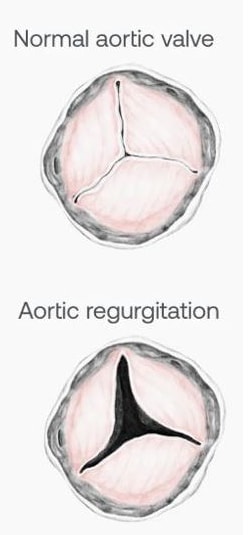 Our experienced team includes a specialty trained interventional cardiologist, who has over 10 years of experience in TAVR procedures and works with our cardiothoracic surgeon. The team uses a minimalist TAVR approach, which:
Our experienced team includes a specialty trained interventional cardiologist, who has over 10 years of experience in TAVR procedures and works with our cardiothoracic surgeon. The team uses a minimalist TAVR approach, which:
- Allows the use of conscious sedation instead of general anesthesia
- Eliminates the need for open heart surgery
- Results in shorter hospital stays
- Facilitates faster recovery and early mobility
- Improves outcomes
- Increases patient satisfaction
When you see us at Enloe Health Structural Heart & Valve Center, you’ll work with our dedicated structural heart and valve coordinators, ensuring continuity of care.
 Your care team will recommend a TAVR procedure if your aortic valve is severely unhealthy and needs to be replaced. Having a TAVR procedure is less invasive than open-heart surgery. The most common approach involves making a small incision in the leg. This is called a transfemoral approach.
Your care team will recommend a TAVR procedure if your aortic valve is severely unhealthy and needs to be replaced. Having a TAVR procedure is less invasive than open-heart surgery. The most common approach involves making a small incision in the leg. This is called a transfemoral approach.
The entire procedure takes about 2 hours in total. However, the TAVR procedure itself usually takes 45 minutes to an hour, depending on your health and the approach. Your care team will determine the type of anesthesia that’s best for you. You will likely be asleep but breathing on your own and given medication to help you relax and block pain.
On the day of your TAVR procedure, if your care team opts for the transfemoral approach, a small incision will be made in your upper leg. Your doctor will insert a short, hollow tube called a sheath into your femoral artery. The new valve will be compressed, so it’s small enough to be placed on a delivery system. That system will be advanced to your heart across your aortic valve. Once it reaches your unhealthy valve, your old valve will be pushed aside as the new valve will be expanded into place. Your team will do an ultrasound of your heart to ensure the new valve is working properly before removing the delivery system. People usually stay in the hospital one or two days after this procedure.
At Enloe Health, TAVR procedures are usually done on Tuesdays. As your procedure approaches, a structural heart coordinator will contact you with a personalized and detailed plan for your upcoming procedure.
 Some people feel relief from their symptoms right after their TAVR. For others it takes longer. Research shows people who have this procedure have better heart function and a better quality of life in 30 days.
Some people feel relief from their symptoms right after their TAVR. For others it takes longer. Research shows people who have this procedure have better heart function and a better quality of life in 30 days.
You will need to adjust your activities during recovery. Participating in Enloe Health Cardiac Rehabilitation can safely improve your recovery and help you increase your physical activity.
 Your heart valves work like doors within your heart. Normally, when a valve closes tightly, the chamber of your heart fills with blood, and when it opens, blood is released into the next section of your heart or out to the rest of your body by the aorta.
Your heart valves work like doors within your heart. Normally, when a valve closes tightly, the chamber of your heart fills with blood, and when it opens, blood is released into the next section of your heart or out to the rest of your body by the aorta.
Aortic regurgitation, which is also called aortic insufficiency, can occur when the aortic valve does not close tightly enough. When this happens, some blood leaks back into the previous section of the heart. This condition is rated on a severity scale of trace, minimal, moderate or severe regurgitation.
Aortic regurgitation can happen for a variety of reasons. Regardless of its origin, there are symptoms associated with the condition that should be discussed with your cardiologist or health care provider. Those symptoms may include:
- Shortness of breath when exercising or lying down
- Palpitations (heart racing)
- Swollen ankles or feet
- Fainting
- Chest pain
- And heart failure
If you are diagnosed with moderate to severe aortic regurgitation, treatment options are available. Ask your provider for a referral to Enloe Health Structural Heart & Valve Center to discuss the right option for you.
Aortic Regurgitation Graphic Created by Eko Health, Inc.